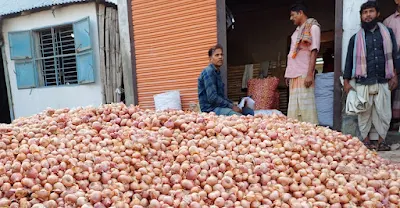Flowers are nature’s delicate masterpieces, symbolizing beauty, love, and elegance. But there’s a select group of blooms that take the concept of luxury to a whole new level. These rare flowers aren't just visually stunning—they’re also incredibly exclusive, difficult to find, and often, astonishingly expensive. From blooms that appear just once a year to cultivated flowers years in the making, these floral wonders are coveted for their rarity, their fascinating backstories, and their hefty price tags.
Here are eight of the world’s most exclusive and expensive flowers, each with its own remarkable story and extraordinary cost.
1. Kadupul Flower – Nature’s Most Elusive Bloom
Known as the Queen of the Night, the Kadupul Flower is perhaps the most elusive bloom in the world. Native to Sri Lanka, this ghostly white flower blooms only at night and wilts by dawn—making it impossible to harvest, sell, or preserve. Its ephemeral beauty and spiritual significance make it not only rare, but priceless. The Kadupul is the epitome of a flower that can’t be bought, only admired.
-
Blooming period: Once a year, overnight
-
Price: Priceless
2. Juliet Rose – A $3 Million Masterpiece
The Juliet Rose is not just any flower; it’s a masterpiece of floral breeding. Bred by renowned English rosarian David Austin, this rose took 15 years and a staggering $3 million to develop. Known for its romantic apricot hue and lush, peony-like petals, it made its debut at the 2006 Chelsea Flower Show and has since become one of the most luxurious and sought-after roses in the world.
-
Price: $3 million
-
Blooming period: Spring to summer
-
Unique feature: Extremely rare, with a distinctive apricot color
3. Shenzhen Nongke Orchid – The Lab-Grown Luxury
This lab-created orchid is a testament to the wonders of modern science. After eight years of development by Chinese researchers, the Shenzhen Nongke Orchid bloomed for the first time in 2005. It’s an extremely rare orchid that only flowers once every 4 to 5 years, making its appearance a highly anticipated event. In 2005, it was sold at auction for a mind-blowing $200,000.
-
Price: $200,000 (at auction)
-
Blooming period: Once every 4-5 years
-
Unique feature: Lab-developed and extremely rare
4. Gold of Kinabalu Orchid – Malaysia’s Floral Treasure
Found exclusively in Kinabalu National Park in Malaysia, the Gold of Kinabalu Orchid is one of the most precious and rare orchids in the world. It blooms for a short time each year between April and May, and its striking green petals with red markings make it one of the most beautiful blooms on the planet. Due to its endangered status and specific growing conditions, this orchid can fetch tens of thousands of dollars on the black market.
-
Price: Tens of thousands (on the black market)
-
Blooming period: April to May
-
Unique feature: Endangered and habitat-specific
5. Saffron Crocus – Tiny Flower, Big Worth
While the Saffron Crocus might look unassuming, it produces one of the world’s most valuable spices: saffron. Each bloom only produces three red stigmas, which must be carefully harvested by hand. It takes 75,000 flowers to make just one pound of saffron, making it an incredibly labor-intensive and valuable crop. The price of saffron can reach up to $10,000 per pound, adding to the Crocus’s luxury appeal.
-
Price: $10,000 per pound of saffron
-
Blooming period: Fall
-
Unique feature: Requires hand-picking of stigmas for saffron
6. Tulip – The Flower That Fuelled an Economic Bubble
In the 17th century, tulips became so prized in Holland that they drove what is now known as “Tulip Mania.” Rare tulip bulbs were so expensive that some could cost more than a house. While tulips are now commonly available, rare varieties continue to fetch high prices, especially those with unusual colors or patterns. Tulips remain symbols of wealth and luxury.
-
Price: Varies (historically, up to $1 million for a single bulb)
-
Blooming period: Early spring
-
Unique feature: Fueled a historic economic bubble in the 1600s
7. Gloriosa Lily – Fire in Floral Form
With its fiery red and yellow petals, the Gloriosa Lily is a showstopper. Native to Africa and Asia, this flower’s dramatic look and rare cultivation make it highly sought-after. Known as the “Flame Lily,” its toxicity only adds to its allure. Though beautiful, the Gloriosa Lily can be difficult to grow, which makes it even more desirable for collectors and floral enthusiasts.
-
Price: $10 to $15 per stem (depending on variety)
-
Blooming period: Summer to fall
-
Unique feature: Toxic and difficult to cultivate
8. Blue Rose – The Dream Made Real
For centuries, the blue rose was considered unattainable. Roses naturally lack the genetic ability to produce a true blue color. But thanks to genetic engineering, scientists have finally made the blue rose a reality. Although they’re still incredibly rare and difficult to produce, these roses are now highly coveted for their innovative creation and their deep symbolic meaning of the unattainable.
-
Price: $10 to $30 per stem
-
Blooming period: Year-round
-
Unique feature: Genetically engineered to produce a true blue hue
In Bloom and Beyond: The True Luxury of Nature
These flowers aren’t just beautiful—they’re symbols of rarity, innovation, and luxury. Whether cultivated in a lab or blooming in a remote corner of the world, they continue to captivate with their exclusivity and mystique. While not everyone will have the opportunity to own or even witness these blooms in their full glory, their stories add a touch of fascination to the world of flowers, reminding us that sometimes, nature's most beautiful creations are also its most unattainable.


















